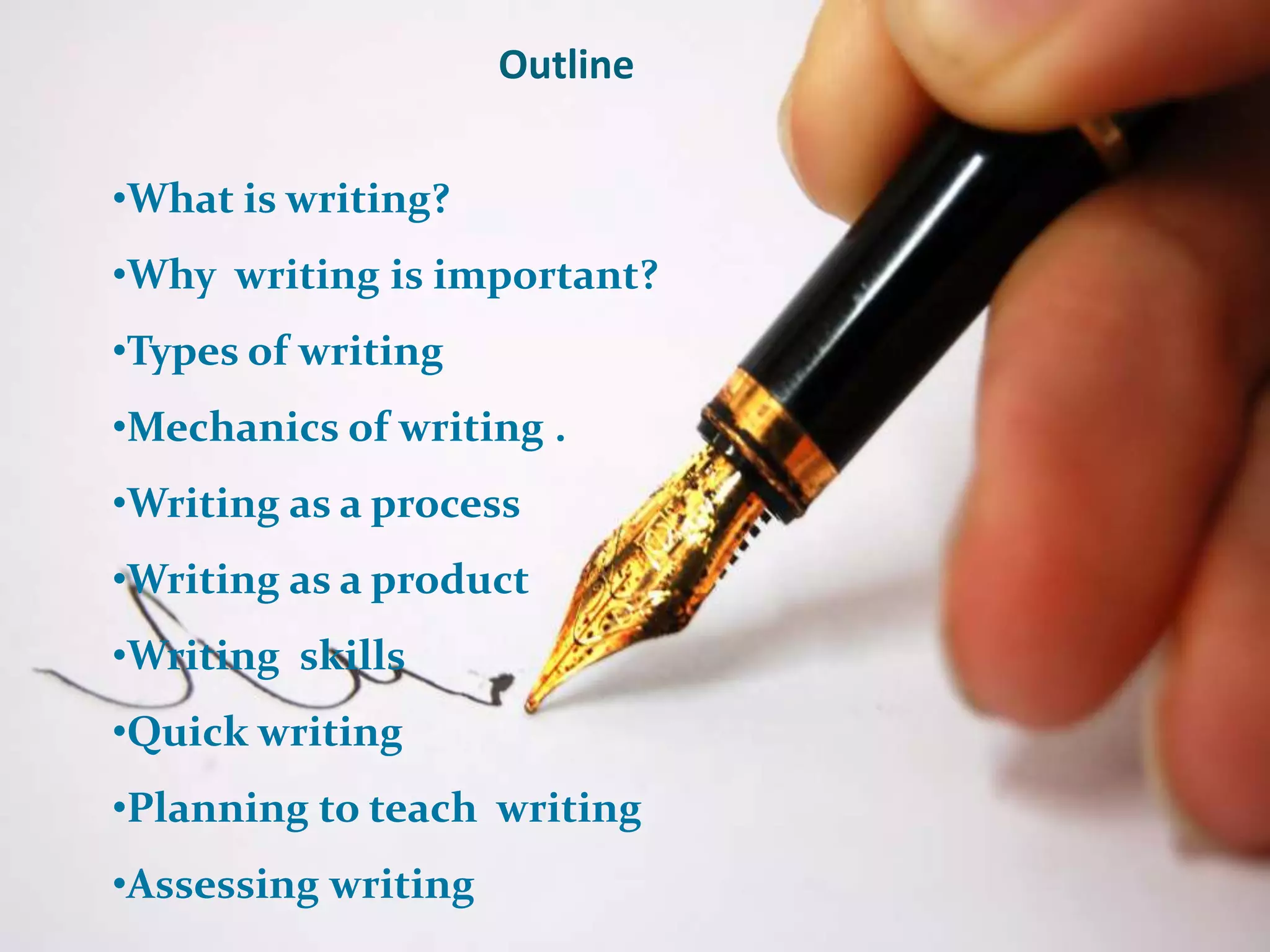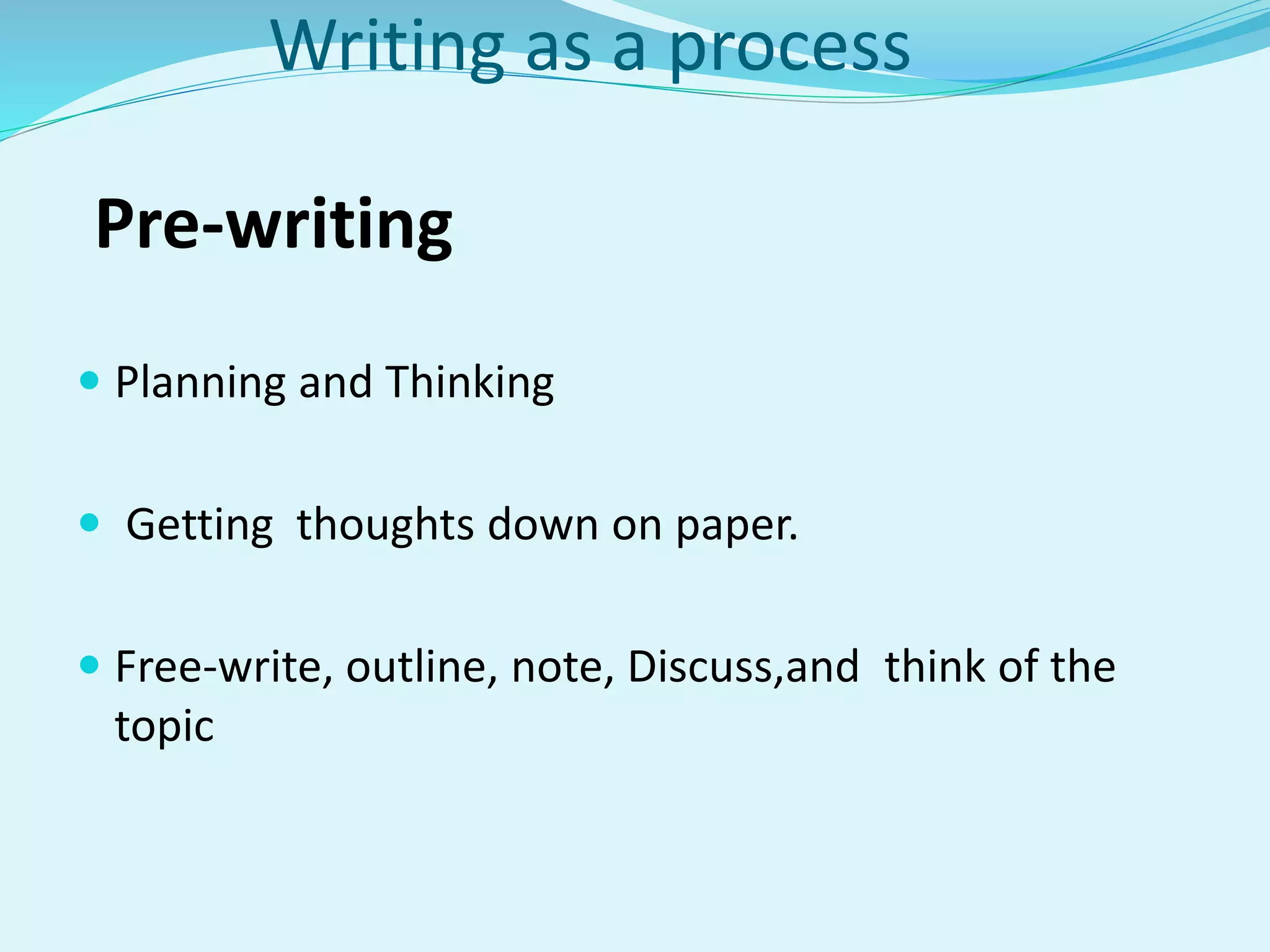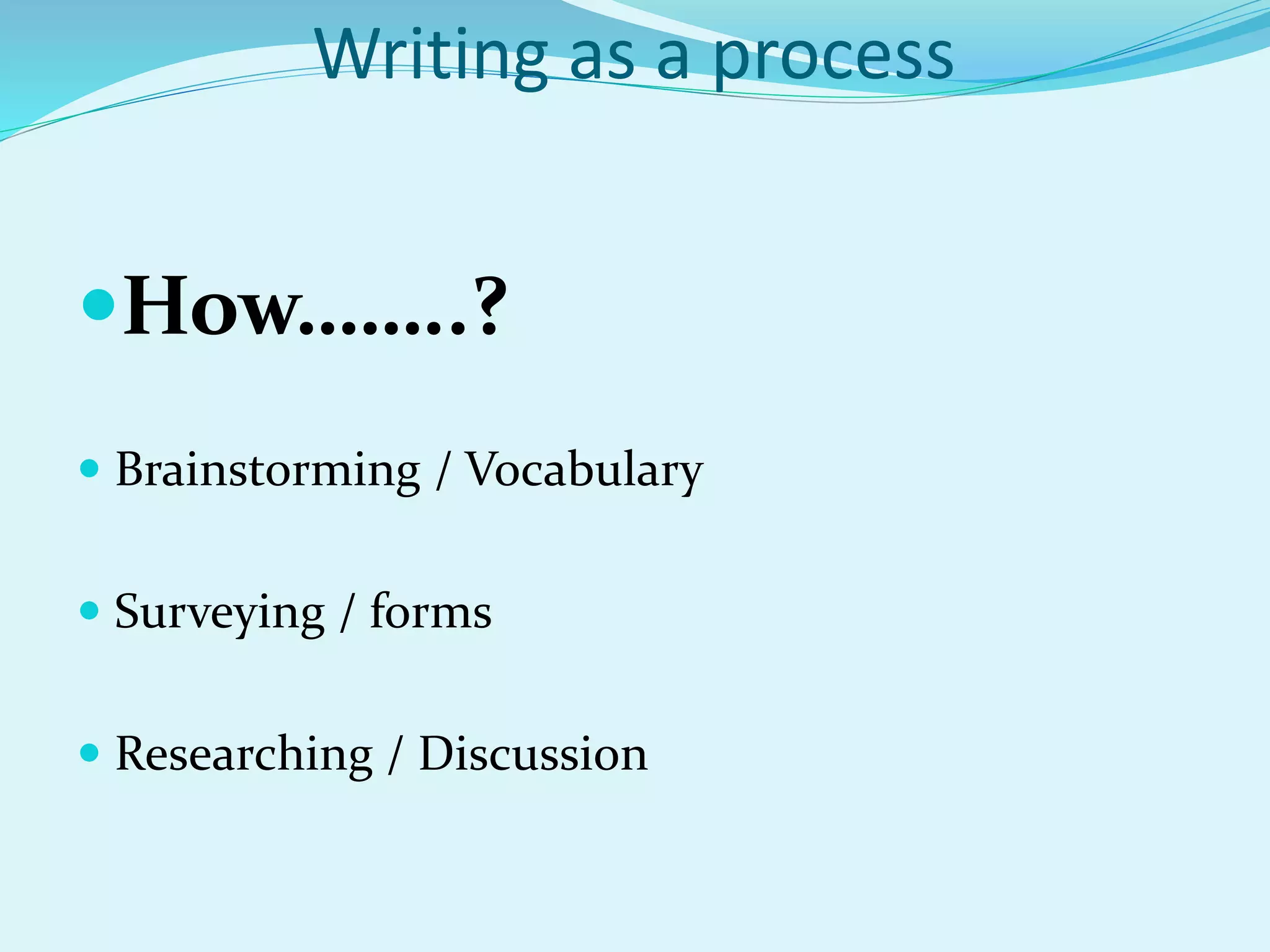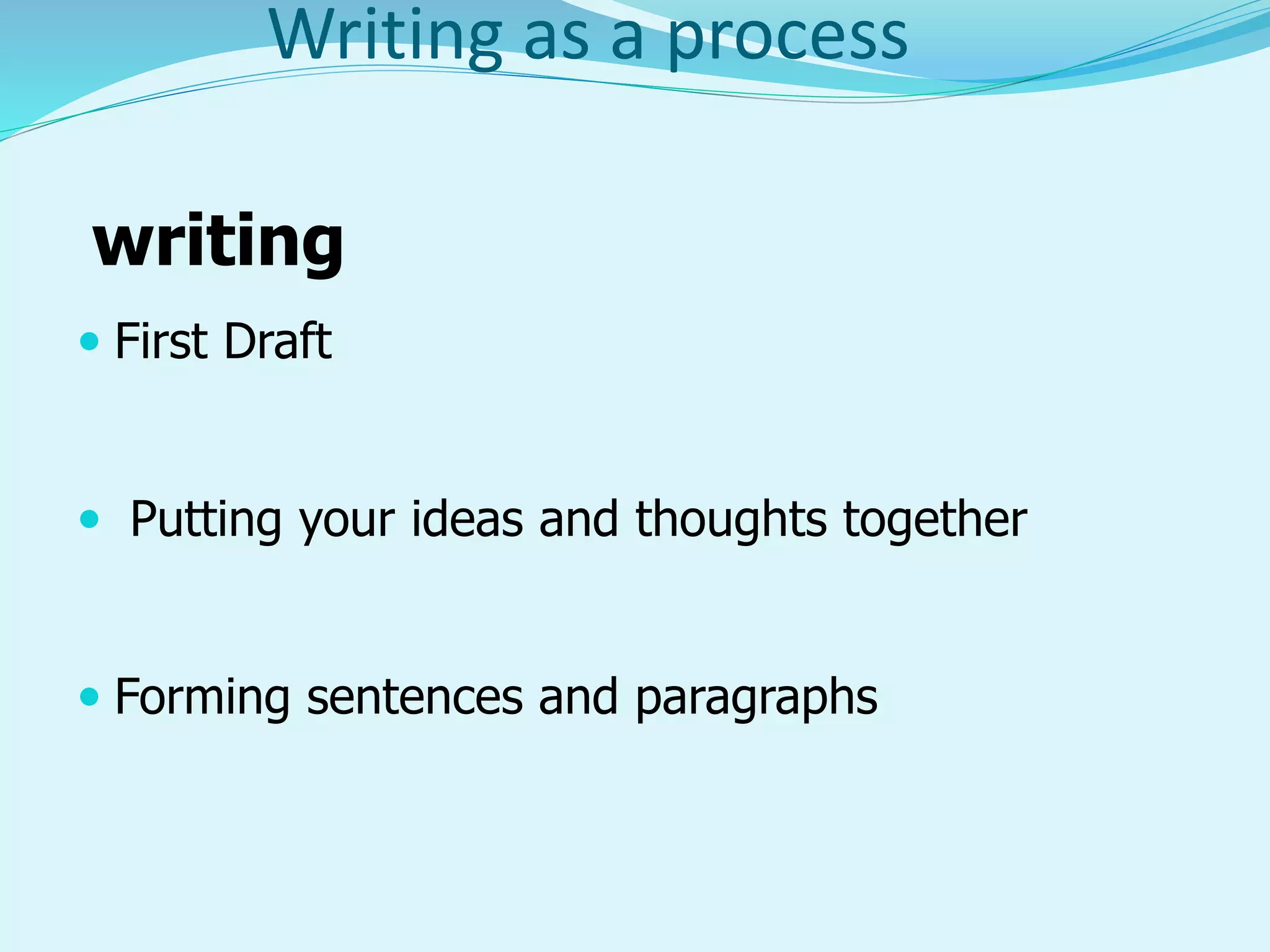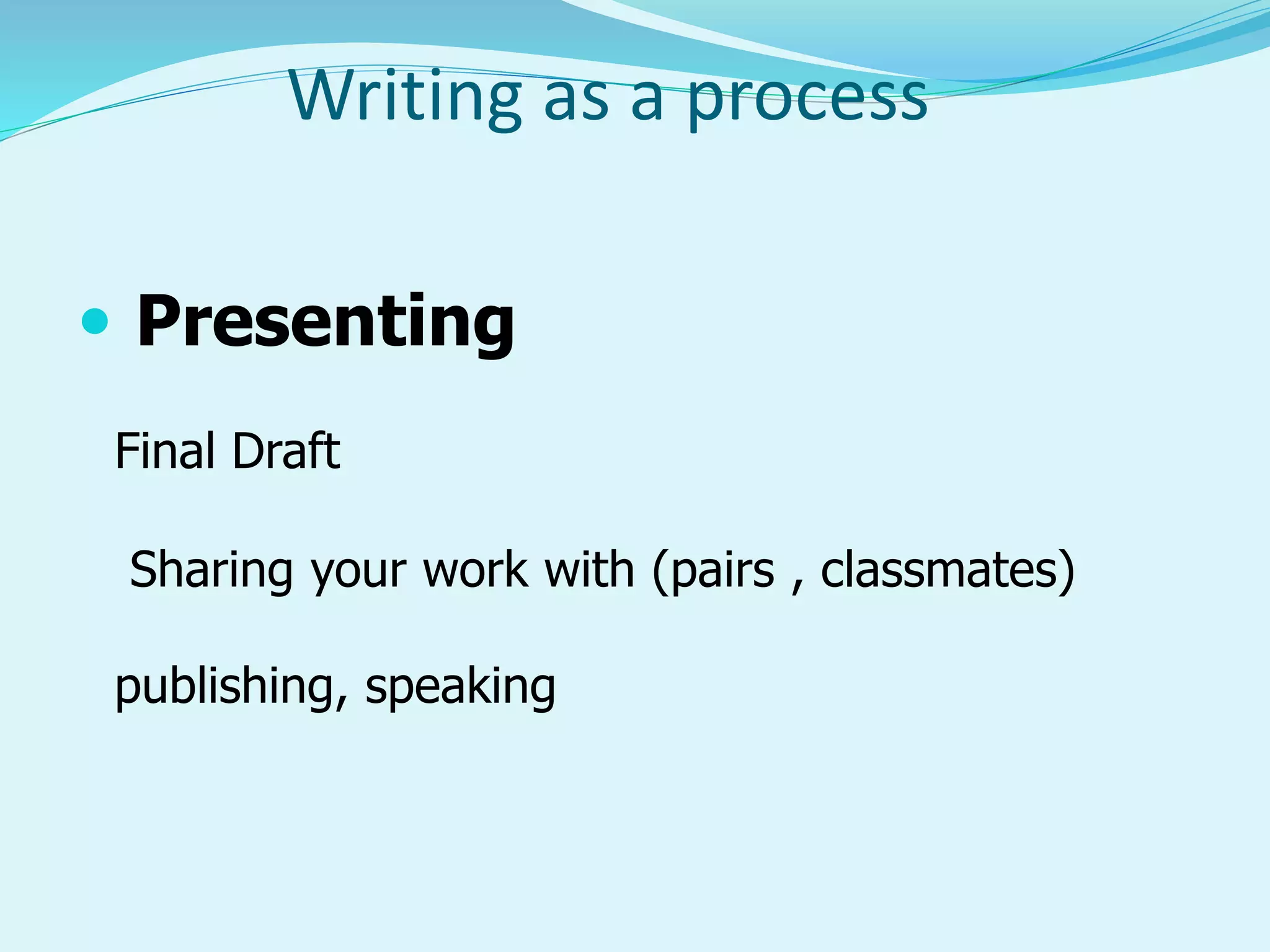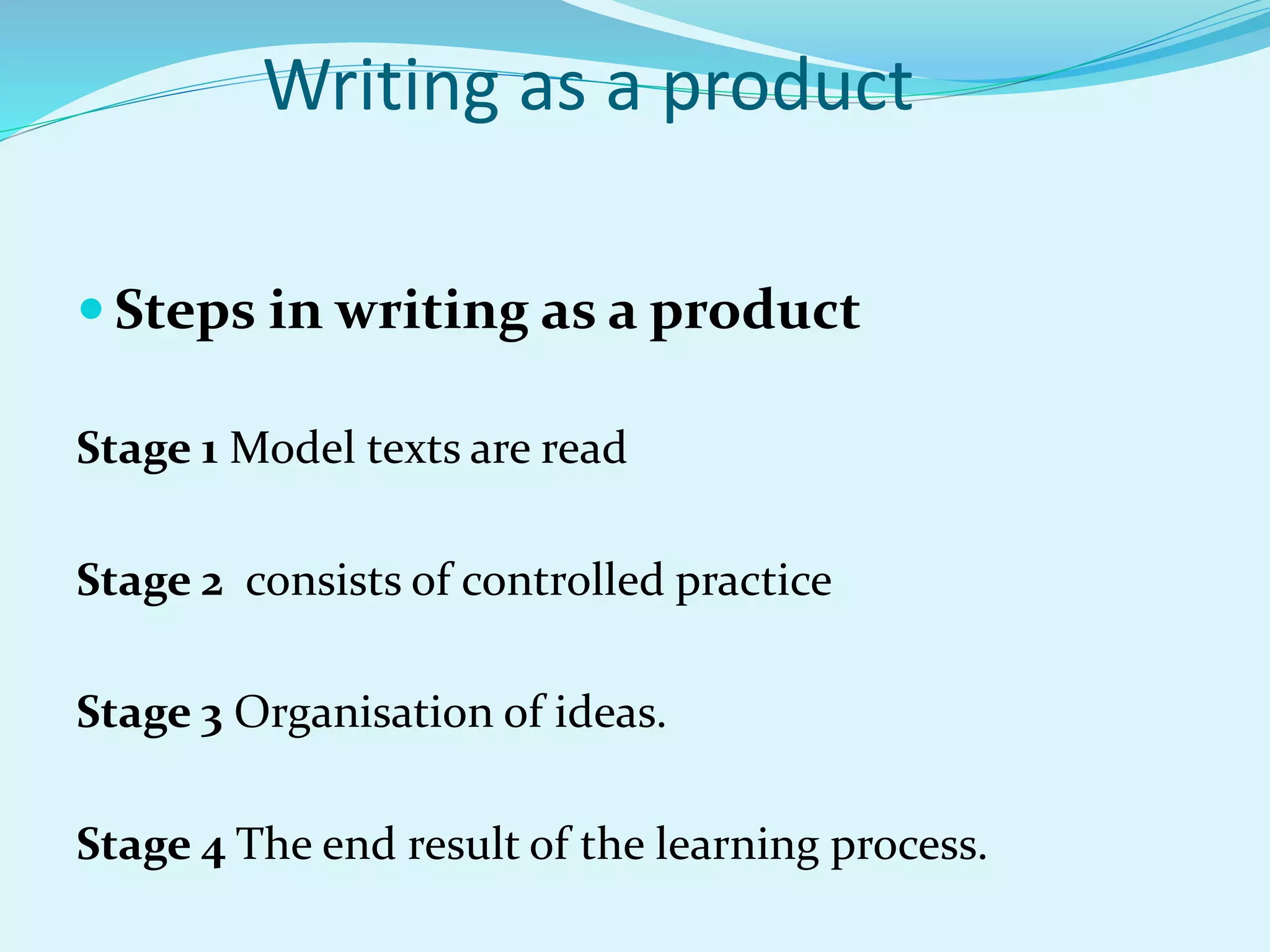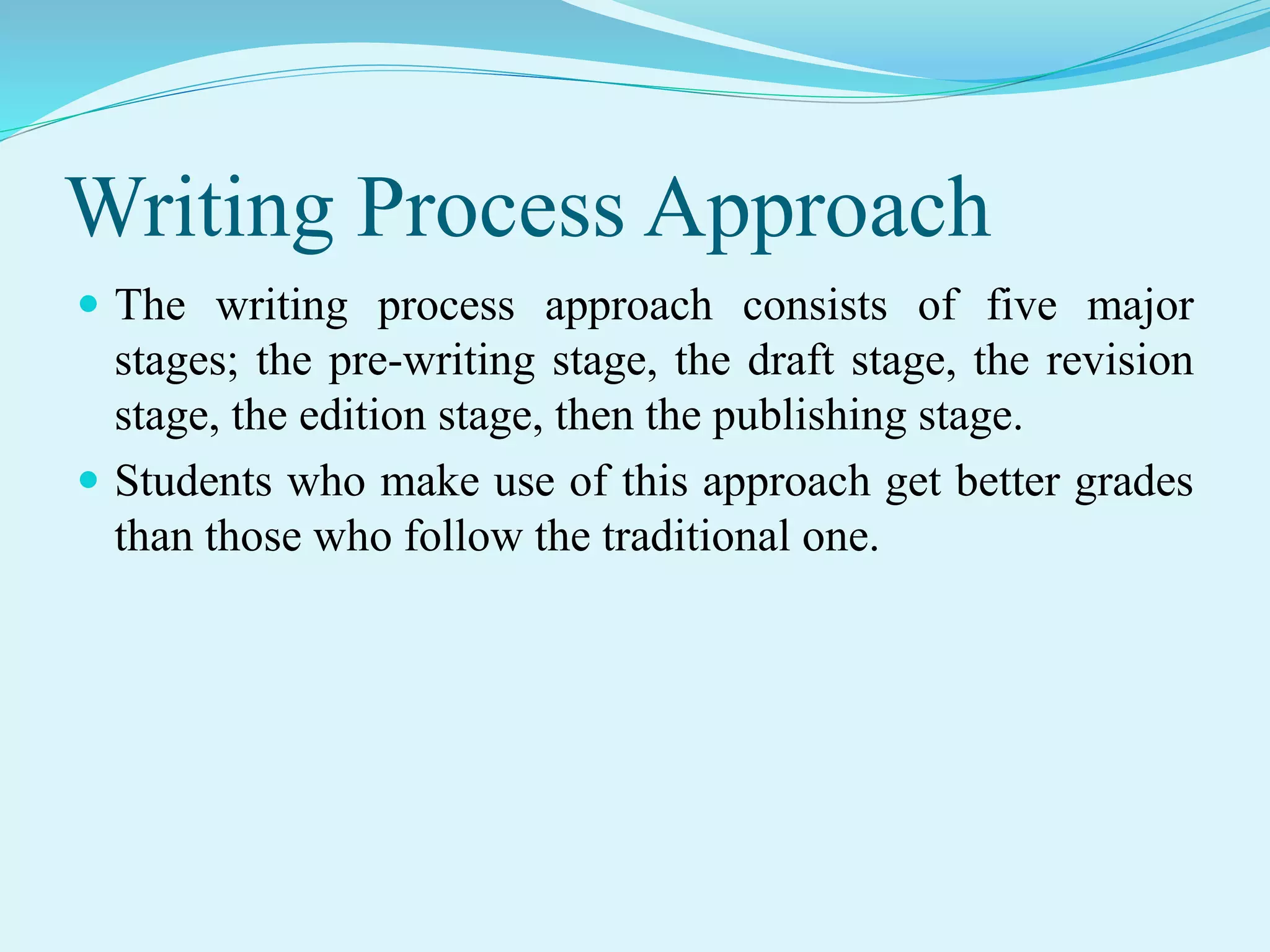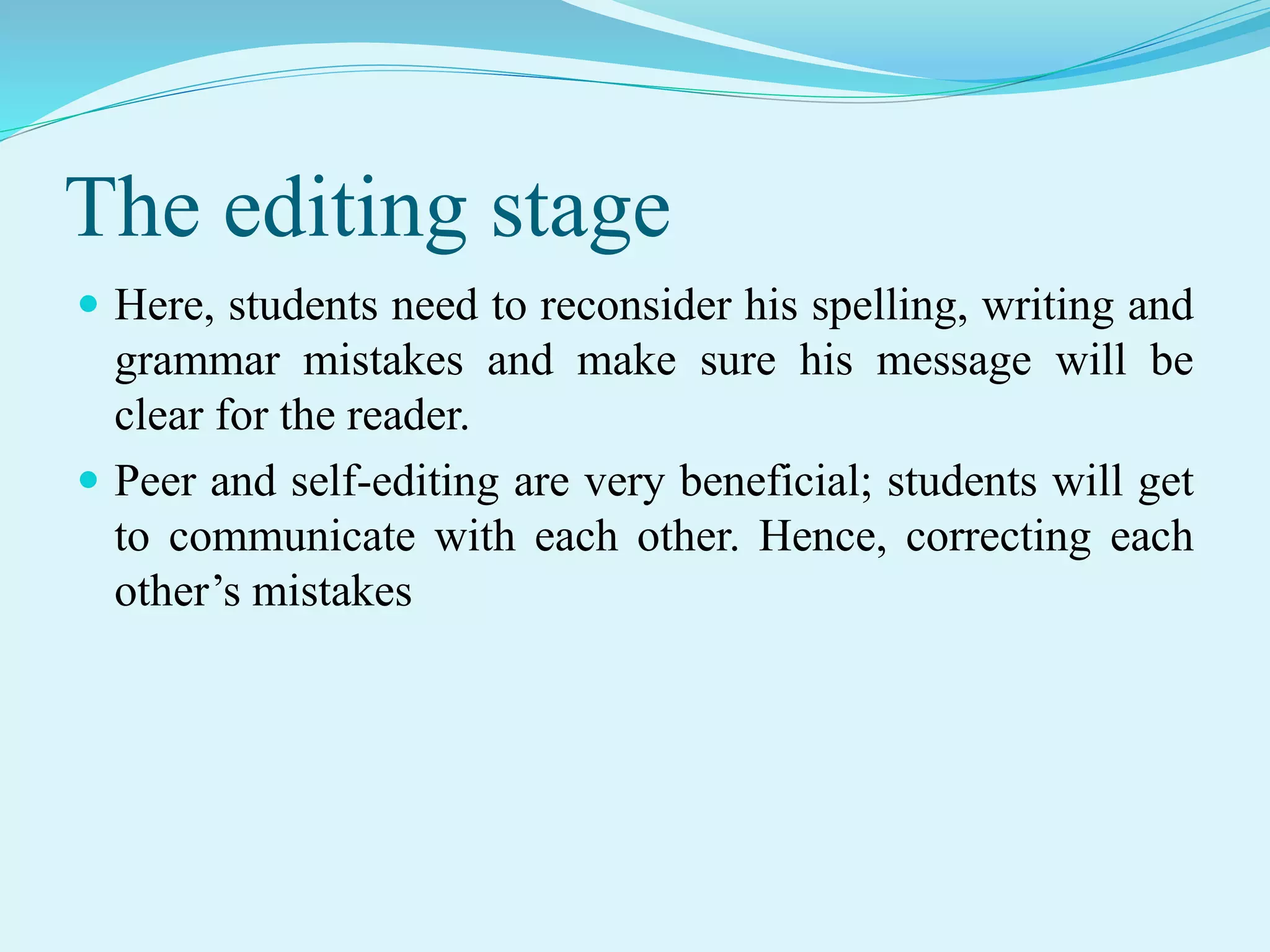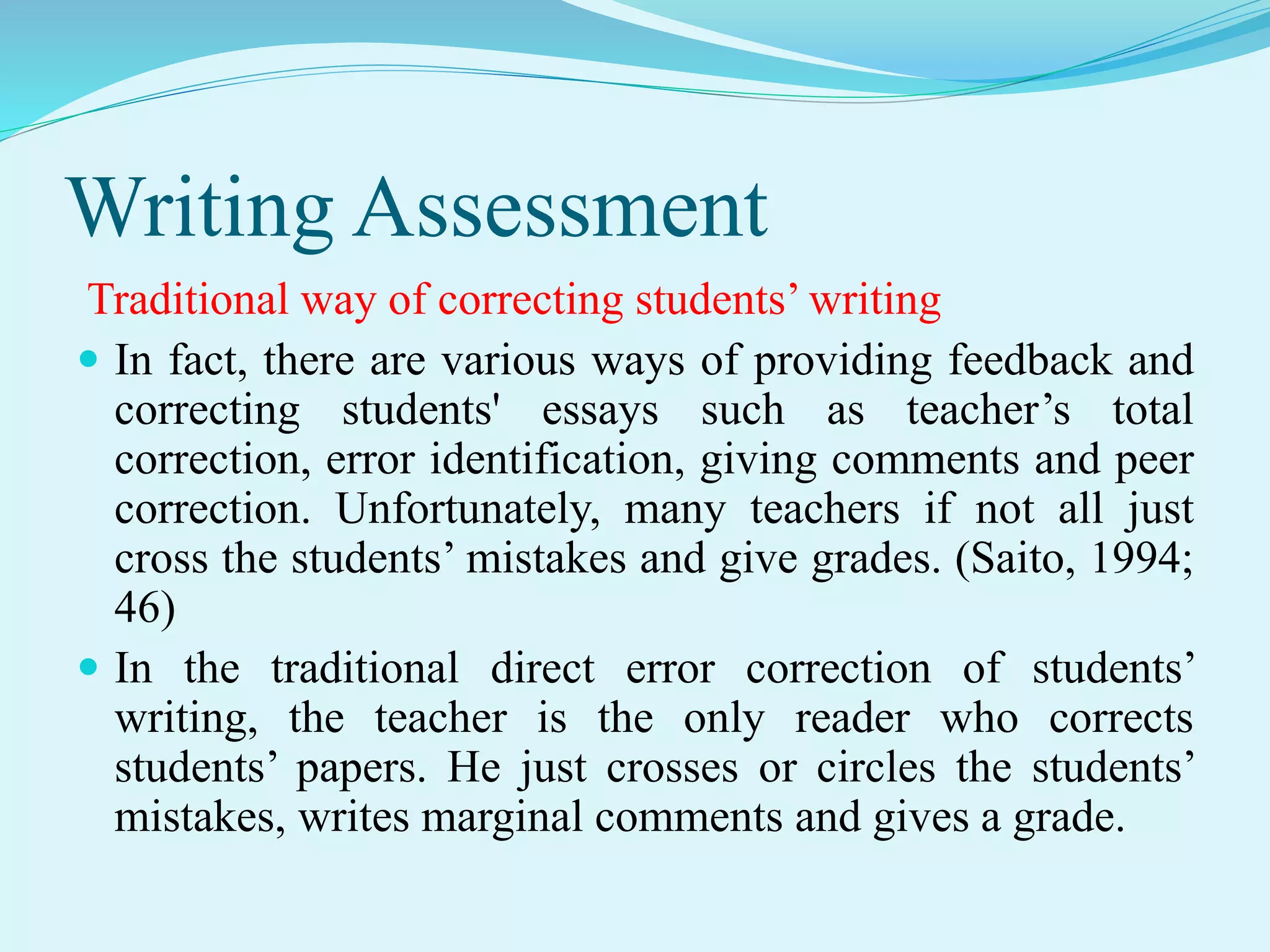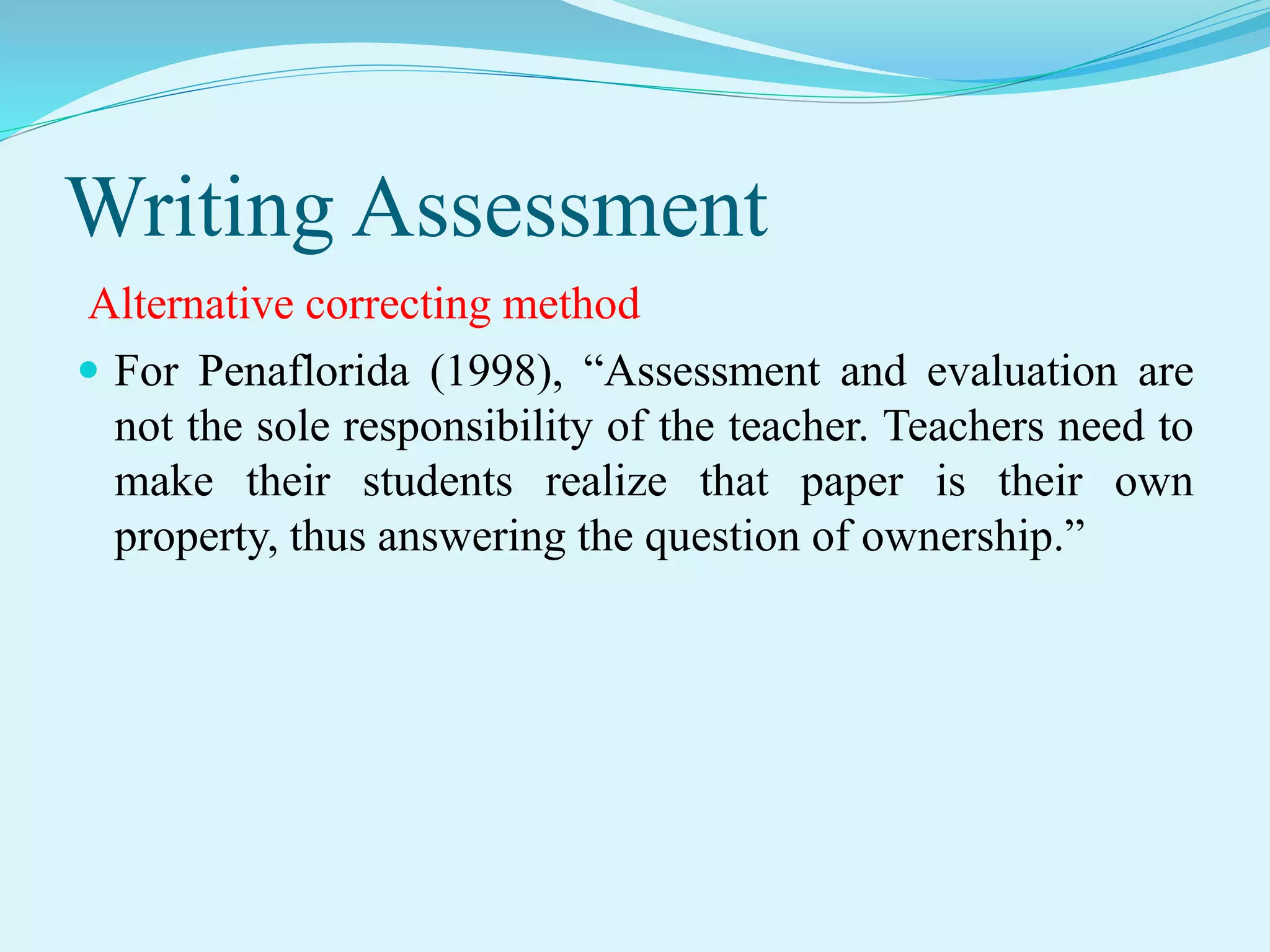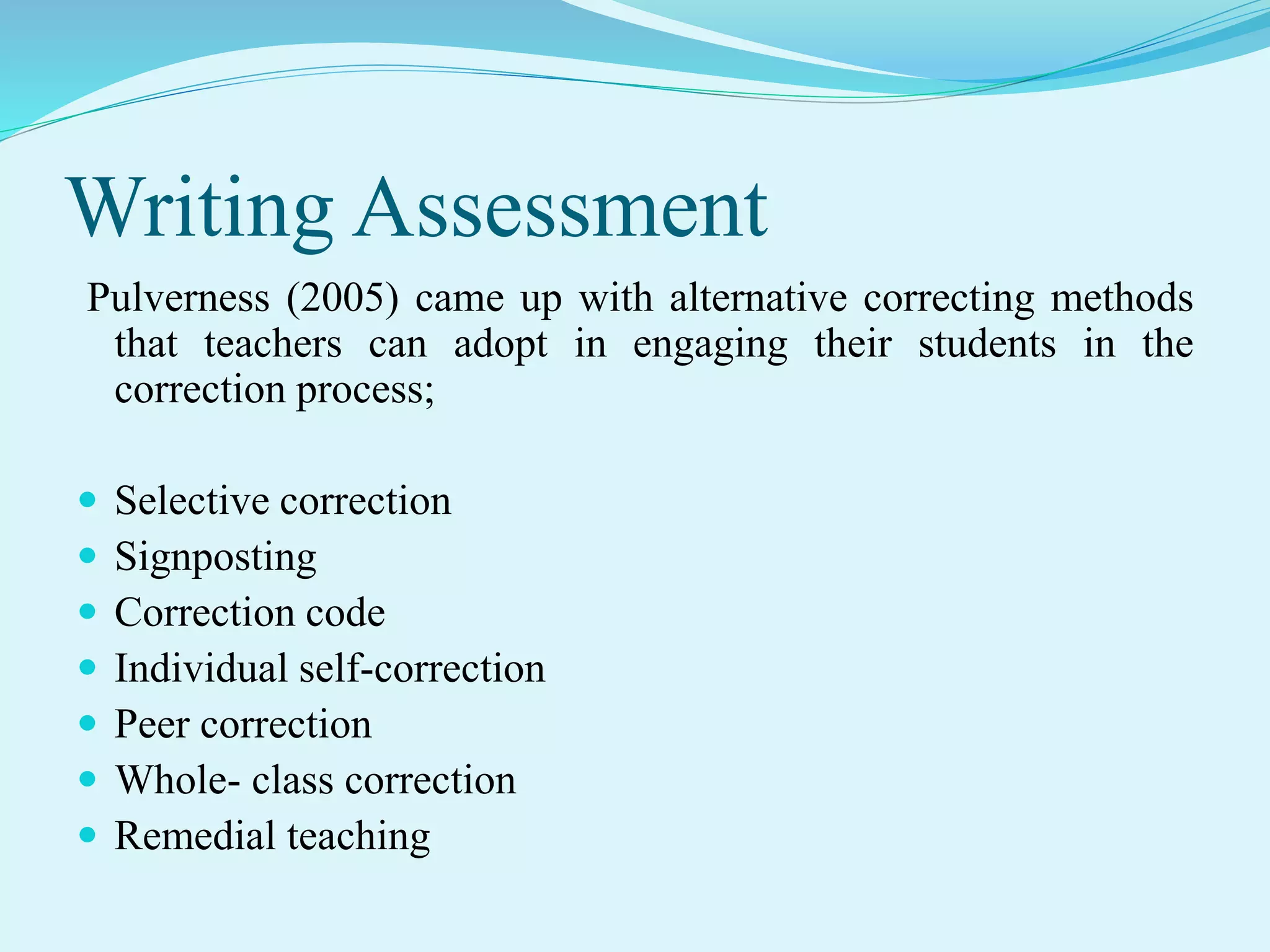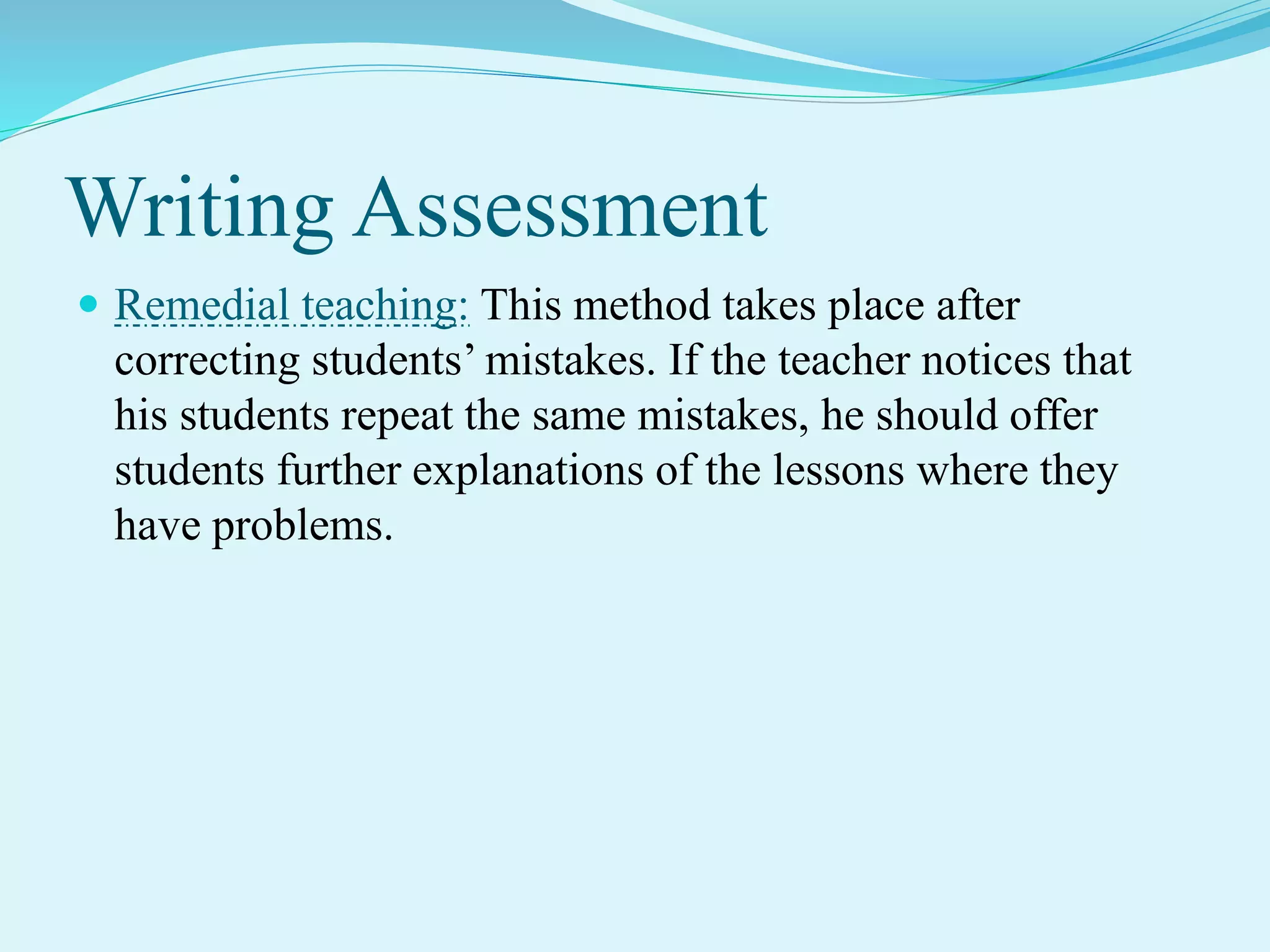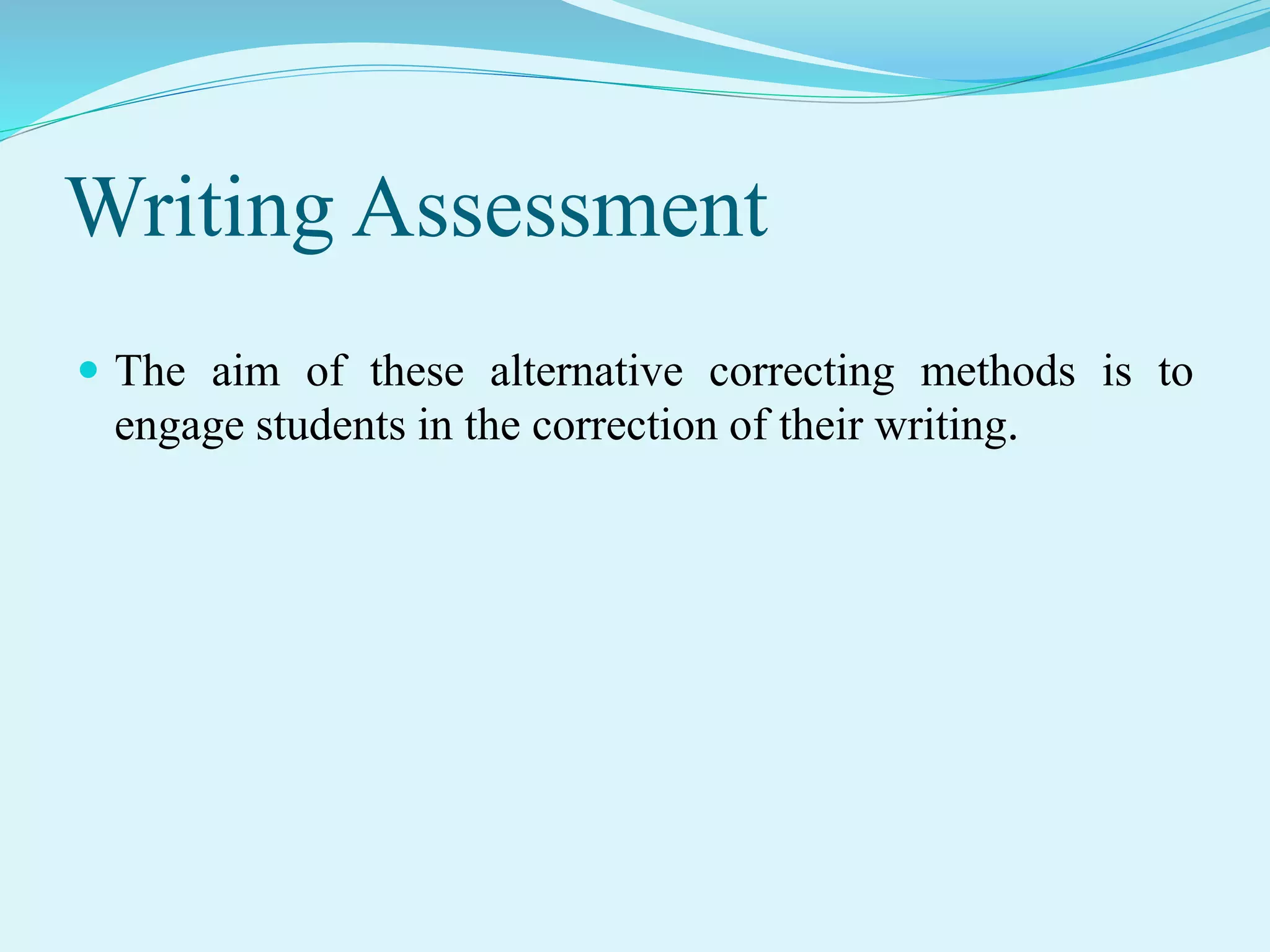This document outlines teaching writing and the writing process. It discusses what writing is, why it is important, types of writing, mechanics of writing, and writing as both a process and a product. The writing process includes planning, drafting, revising, editing, and publishing. Quick writing and assessing writing are also covered. Alternative methods for assessing and providing feedback on student writing are proposed, including selective correction, signposting, peer correction, and remedial teaching.

